Memories Of Malacca
Most visitors tend to visit Malacca (also known as Melaka) on a day or overnight trip from Kuala Lumpur, which is a pity. The allure of Malacca is manifold with its unique pedigree borne from its ancestral settlers from the four corners of the world. Once hailed as the jewel of the Straits of Malacca for many centuries, Malacca is Malaysia’s little historic gem, a UNESCO World Heritage site and the birthplace of the Malay Sultanate in the 15th century. Its rich heritage from the era of the Sultanate to its colonial rule by foreign powers has woven a living tapestry of its historical timeline embedded in a myriad of extraordinary culture. Setting foot in Malacca is like embarking on a journey in a history book. Today it is this enduring legacy that makes Malacca one of the top destinations in Malaysia.
Spices And Everything Nice
Malacca was founded by Parameswara a fugitive prince from Sumatra who was said to name the town after the Melaka tree, which grew in abundance in the area. He considered this location as an auspicious place to build a settlement when he witnessed a mousedeer outwitted his hunting dogs as a sign of the weak overpowering the strong. As a homage to the mousedeer, it is now featured in the coat of arms of Malacca. In its heyday Malacca was a thriving port trading in gold, silk, tea, opium, tobacco, perfumes, porcelain, spices and commodities from neighbouring countries including China, Middle East, India, Indonesia, Borneo and as far away as Europe and South America. It was said over 80 different languages were spoken at the time when merchants from all over the world converged here to trade. Malacca reached the peak of its supremacy during the reign of Sultan Mansur Shah, who ruled from 1459 to 1477.
The economic importance of the town, particularly in its strategic geographical position and its role in the spice trade, prompted the Portuguese, Dutch and British successively to colonise the port. Wars were fought among the colonialists to gain control of this region at a time when spices were worth more than gold. A Portuguese historian called Tome Pires who lived in Malacca at the time had said, “Whoever is lord of Malacca shall have his hands on the throat of Venice.” Today Malacca may have lost its importance as a trading post but its legacy lives on.
History Lesson On A Malacca Cruise
It is hard to imagine the small Malacca River was once the lifeline of the town in the 15th century. Cruising down the river on a pleasure boat is one of the best ways to see the riverscape of the town. As we cruised along the Malacca River, the running commentary points out the various places of interest on the banks with snippets of historical facts.
The dilapidated old warehouses and villages along the river have been given a major face-lift and complete makeover. The historical buildings have been restored and converted into bars, entertainment outlets, art galleries and restaurants breathing new life into the town. The once stagnant and dirty river has been rejuvenated and cleaned up. Colourful murals depicting historical events, legends and modern art are painted on some of the walls like an open-air gallery.
Old bridges that have served the river since historical time have been repaired and given a fresh coat of paint. Bright street lights have been installed on the river promenades to make it safe and pleasant to stroll in the cool of the evening. Malacca River has once again regained its importance except now it is bringing in the tourists instead of traders and conquering foreign powers.
Walking Back Into History
We were literally hot on the heritage trail as the temperature soared to a sizzling 40˚C when we decided to trace the footsteps of the Sultanate and the colonial masters.
First up was the A Famosa, a ruin fortress on a hill built by the Portuguese in 1511 to defend the settlement. It was once a complex of fortified walls with watchtowers, churches and quarters for the army and houses for their people. The Dutch in their quest to gain control of the lucrative spice trade launched attacks on Malacca and eventually wrestled the power from the Portuguese in 1641. During the skirmish, much of the fortress was damaged but the Dutch restored it in 1670. When Malacca was ceded to the British in 1824, they began to demolish the fortress. It would have been completely razed to the ground had it not been for the intervention of Sir Stamford Raffles, the founder of Singapore. Sadly only the gateway, the Porta de Santiago, could be saved and today it is the only concrete legacy of the Portuguese era but the bloodline remains in the small community of Kristangs who are descendants of the Portuguese. The older generation speaks Cristao, a 16th century Portuguese dialect, which is not spoken in Portugal today. They observe Portuguese festivals and resonate with their traditional songs and dances.
Our next heritage jaunt is the wonderful Malacca Sultanate Palace Museum, said to be a replica of the palace of Sultan Mansur Shah. It is an impressive historical and cultural museum giving an insight into the ancient Malay Kingdom packed full of riveting exhibits of photographs, paintings, weaponry, musical instruments and artefacts. I particularly love the life-size tableaux of life in the court and portrayal of the legendary warriors Hang Tuah and Hang Jebat and other Malay folklores. There are illustrations and exhibits of foreign traders who came from far flung places to pay homage to the sultan.
The Dutch left their own legacy with their imposing red buildings in the historical square. The Stadthuys (Townhouse) was built in 1650 as the official residence of the Dutch governor and his officers. Today it is the Historical Museum where Portuguese and Dutch relics are displayed. Next to the Stadhuys is Christ Church, which was completed in 1753. It is an excellent example of Dutch architecture of which the most notable feature is the ceiling, whose beams, over 15m long, were made from a single tree each. Further up the road is the St Francis Xavier Church, which was built in 1849, dedicated to the saint who was a missionary in Southeast Asia in the 16th century.
With such an enriched heritage, Malacca has inherited a remarkable culture that is reflected in its beautiful architecture, art and crafts, cuisine and even a unique local Peranakan dialect. Malacca is famous for its Peranakan culture and food, a hybrid of Chinese and Malay union. During the reign of Sultan Mansur Shah, he married Hang Li Poh, a Chinese princess from the Ming dynasty. She brought an entourage of 500 to accompany her.
They inter-married the local Malays and from this union the Peranakan race was born along with a much celebrated fusion cuisine. This unique blending of culture forms the basis of Nonya (aka Peranakan) cuisine honing in on the best of Chinese cooking techniques and the Malay usage of spices and herbs. We stayed at the fabulous heritage Majestic Malacca Hotel, which takes their guests on “The Peranakan Culinary Journey” in a cooking class delving into the intricacies of authentic Nonya cuisine hosted by their Peranakan Master Chef.
On Her Majestic Service
The Majestic Malacca (www.majesticmalacca.com) was once a grand mansion built by a wealthy tycoon with lavish furnishings of Victorian tiles, stained glass windows and expensive fittings. After his death, it was sold and converted into a grand hotel called The Majestic attracting wealthy clienteles such as British plantation owners, the colonial community and celebrities in 1950s and 1960s. But the grandeur began to fade and it descended into a dilapidated guesthouse before it closed in 2000. It fell into a ruinous state of neglect until YTL Hotels, a Malaysian hospitality company that owns top luxury brand hotels, acquired it and restored it to its former glory. They reopened it as a luxury heritage hotel in 2008 and called it Majestic Malacca as a homage to its past. The original mansion houses the reception area, lounge, library and a Peranakan Restaurant. A modern tower is built behind the mansion with elegant rooms enriched in a symphony of traditional style and a touch of modernity.
Personally, my favourite is the amazing Spa Village that offers unique spa treatments derived from the Peranakan wellbeing philosophy using local herbs and ingredients. After baking in the sun from my heritage walk, a spa treatment beckoned. I surrendered myself to the magical hands of my amazing therapist as she gave me a Malacca palm sugar and honey scrub and massaged my weary muscles followed by a pandan coconut hair mask and a bird’s nest and star fruit facial. I transcended into a total zone of Zen….bliss!
Malacca is 147km south of Kuala Lumpur, the capital and international gateway to Malaysia served by Malaysia Airlines www.malaysiaairlines.com and most major airlines.
©MyFacesAndPlaces.co.uk
Links to other west Malaysian posts
Related Posts on Malaysia
- Penang Street Art – The Story behind the Success (in 10 parts).
- Call Of The Wild On Gaya Island Resort
- 10 Essential and Helpful Tips on the Melaka River Cruise
- The Blue Mansion in George Town – A Feng Shui Analysis.
- Majestic Hotel Kuala Lumpur
- Wild About Pangkor Laut
Albert Teo – A Man With A Green Mission
Posts on Malaysian Food
- 10 Mouth-Watering Facts of Hainanese Chicken Rice & Hainanese Delights Restaurant
- The Best Seafood in Town – Lim Hock Ann Seafood Restaurant
- A Foodie’s Dinner of Malaysian Food at Selesa Restaurant in London.
- The Roti King is hidden in Doric Way
- Dinner at Guan Chua ’s Peranakan Food Supper Club


















